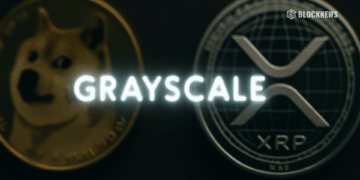- TON Network is evolving from hype-fueled Tap-to-Earn activity into a full-stack decentralized internet platform, offering tools like TON Storage, TON Sites, and TON Proxy that aim to rebuild today’s web infrastructure with privacy, speed, and scalability in mind.
- Its 2025 roadmap focuses on scaling performance and deepening Telegram integration, with features like multi-node payment routing, a validator toolkit, and storage node marketplaces designed to boost utility, dApp development, and real-world adoption.
- Toncoin powers a modular ecosystem that includes DNS domains, micro-payments, staking, NFT sales, and privacy layers, making TON one of the most utility-rich and technically ambitious L1 blockchains heading into 2025.
After the Tap-to-Earn boom, it felt like the entire crypto world had its eyes glued to TON Network. Wallet activity spiked, and Telegram was flooded with tap bots, while on-chain metrics on TON hit new highs. Then, as the crypto market took a downturn, the hype faded and activity dropped.
However, while much of the casual speculation drifted elsewhere, TON quietly shifted gears — steadily positioning itself as the infrastructure for a decentralized, scalable, and modular internet. Now, the network has started to draw in Web3 developers, OG NFT collections, and early-stage projects hunting for a fast, affordable, and energy-efficient chain.
And that is just the tip of it. Because behind the Toncoin price chart and Tap-to-Earn headlines, the network is looking to redefine what a decentralized internet stack can be. So, let us break down what is really happening inside The Open Network — and why you should be paying attention.
What Is TON Network?
The Open Network, or TON, is a full-spectrum, layer-1 Proof-of-Stake blockchain designed to be the decentralized backbone of the Telegram ecosystem — and eventually, the rest of the internet.
Born from the minds behind Telegram, TON initially launched as “Telegram Open Network” before legal wrangling with the SEC led to its rebranding and decentralization. Now community-led and open-source, it operates independently of Telegram, though deep integration remains central to its growth strategy.
It is not just another smart contract platform. TON is engineered to be a multi-chain, infinitely sharded, self-repairing machine — a platform capable of scaling to millions of TPS, with built-in support for decentralized storage, domain resolution, censorship-resistant websites, anonymous networking, and micropayment channels.
TON’s Modular Ecosystem
What makes The Open Network unique is that it is a full-stack ecosystem designed to replace critical pieces of today’s internet infrastructure. The major components driving this vision includes:
TON Blockchain
At the heart of the network lies the TON Blockchain — a high-performance, Proof-of-Stake chain with dynamic sharding. It is built for speed and scalability, achieving transaction finality in under six seconds and processing thousands of transactions per second in practice, with the architecture to scale into the millions.
The blockchain acts as the settlement layer, powering token transfers, smart contracts, and all other TON services. Its modular design allows it to host sidechains, Layer-2 solutions, and application-specific subnets in the future, ensuring flexibility as the ecosystem grows.
TON DNS
Think ENS, but faster, cleaner, and deeply woven into Telegram’s identity layer. TON DNS assigns readable “.ton” domains to wallets, dApps, and websites — making complex addresses a thing of the past.
More than vanity handles, TON DNS domains are smart-contract-driven identities that enable simplified crypto payments, domain-linked websites, and brand-aligned on-chain presence. It is an essential infrastructure for a network that wants to merge user experience with cryptographic security.
TON Storage
Decentralized storage is one of the hardest problems in crypto, but TON Storage tackles it head-on. It enables users to securely upload files that are split into encrypted fragments, which are then distributed across a network of independent storage nodes. Each file receives a unique identifier, allowing it to be quickly located and reconstructed without relying on any central authority. This system ensures that data remains accessible even if some nodes go offline, providing resilience and censorship resistance.
What truly makes TON Storage stand out is its incentive-driven model. Storage providers earn Toncoin by hosting these file fragments, encouraging a distributed network of reliable nodes around the world. This approach not only supports secure and persistent data hosting for NFTs, dApps, and websites but also reduces dependency on costly centralized cloud services.
TON Sites
If TON Storage is the hard drive, TON Sites is the web server. It allows developers to deploy decentralized websites and dApps directly on-chain or through the TON Storage network. This makes it possible to host content that’s immune to takedowns, server failures, or gatekeeping by traditional hosting services.
So essentially, TON sites remove the friction of hosting, identity, and monetization in one swoop. No registrars. No hosting bills. No centralized choke points. Just self-sovereign web presence with programmable logic baked in.
TON Proxy
On today’s internet, privacy is optional and increasingly rare. TON Proxy flips that narrative. It acts like a decentralized VPN-layer and proxy service rolled into one, letting users route their traffic anonymously through a network of volunteer-run nodes.
This matters for two reasons. First, it lets users bypass geo-restrictions and surveillance infrastructure. Second, it makes sure TON-based services and apps remain accessible even in regions where Web3 projects are banned or censored. All in all, TON Proxy ensures your network traffic stays your business.
What Problems Does It Solve?
TON was engineered to address core weaknesses in both blockchain ecosystems and traditional web infrastructure. As such, it tackles scalability, cost inefficiencies, environmental concerns, poor user experience, and interoperability — rethinking how a decentralized internet stack should actually function. This includes:
Scalability Bottlenecks
Most blockchains crumble under high demand, with soaring gas fees and sluggish transaction speeds. TON was built to handle millions of transactions per second through dynamic sharding and parallel processing. It fragments the network into smaller shards that work independently, drastically boosting throughput while keeping fees ultra-low — even at scale.
High Transaction Costs
Legacy networks like Bitcoin and Ethereum become painfully expensive during peak usage. TON’s PoS consensus and sharding architecture sidestep this by reducing validation costs and preventing network congestion. As a result, users can send Toncoin globally for fractions of a cent, making microtransactions and everyday crypto payments genuinely practical.
Energy Waste
Proof-of-Work networks consume absurd amounts of electricity, leaving sustainability concerns in their wake. TON eliminates miners entirely, opting for a Proof-of-Stake system where validators secure the network by locking up Toncoin. This makes TON far more energy-efficient while ensuring network security without the ecological footprint of older chains.
Simplified User Experience
Blockchain UX has long been a barrier to mainstream adoption. TON softens this with intuitive interfaces like native wallets in Telegram, readable “.ton” domains through TON DNS, and the viral success of tap-to-earn mechanics. Essentially, it hides blockchain’s technical complexity, making Web3 tools accessible to everyday users without friction.
Cross-Chain Interoperability
Modern web services are vulnerable to censorship, outages, and surveillance thanks to centralized hosting and DNS systems. TON counters this with decentralized storage, anonymous networking via TON Proxy, and censorship-resistant “.ton” websites.
Utility and Offerings
TON’s design prioritizes utility, and that utility shows up everywhere in the ecosystem. This includes:
- Toncoin – the network’s native token, is used for gas, staking, validator slashing protection, governance voting, smart contract execution, Telegram ad payments, subscriptions, and NFT sales.
- TON Payments – enable micropayment channels for fast, fee-less streaming payments — ideal for gaming, content tips, and machine-to-machine payments.
- Mini-Apps – like Notcoin onboarded millions into Web3 with nothing more than a Telegram tap. Future games, DeFi protocols, and social dApps will follow the same playbook, transforming Telegram from chat app to crypto OS.
- Staking – allows users to earn passive income via delegation or by operating validators.
- TON Domains – act as Web3 usernames, payment handles, and decentralized brand assets — owned and traded like NFTs.
- Storage nodes and Proxy relays – allowing users to earn Toncoin by supporting the network’s data and privacy layers.
Roadmap and Plans Ahead
Looking ahead, The Open Network is gearing up for some of its most ambitious upgrades yet. The roadmap for 2025 signals a decisive shift from building foundational infrastructure to fine-tuning scalability, improving developer tooling, and expanding real-world utility. Leading the charge is the biggest “Accelerator” update in Mainnet history — a sweeping performance overhaul designed to sharpen transaction speeds, reduce latency, and bolster overall network reliability under growing demand.
On the developer side, fresh tools for validators, a revamped Toncenter API, and official UX guidelines are set to streamline dApp and mini-app deployment within Telegram’s ecosystem. These enhancements aim to give creators better infrastructure while standardizing user experiences across the network.
TON’s Payment Network is also leveling up with a Layer 2 upgrade that introduces multi-node routing. Instead of a single path, transactions will travel through multiple participant-run nodes, with operators earning fees for forwarding payments — a game-changer for microtransactions and decentralized commerce.
Moreover, TON Storage is prepping a suite of consumer-facing products like TON Torrents and Dropbox-style apps, alongside the launch of a storage node marketplace. Users will soon be able to browse and select nodes based on reputation, capacity, and location, giving them greater control over where their data lives. Complementing all this are advancements like TON BTC Teleport, typed data signatures, multi-account generation algorithms, and early sidechain research, signaling that TON is just getting started to deliver some of its biggest updates.
Final Thoughts
In conclusion, The Open Network is entering a new phase of growth — one no longer driven by hype but by genuine infrastructure advances and rising developer interest. It is also important to highlight that over the past few months, TON’s modular stack has quietly matured, and interest is steadily building within the Web3 ecosystem as projects, builders, and early adopters recognize its potential as a scalable, efficient, and user-friendly blockchain.
So, with its 2025 roadmap packed with performance upgrades, developer tooling, and new services like decentralized storage marketplaces and Layer 2 payment routing, TON is positioning itself as a serious contender for powering both consumer and enterprise-grade decentralized applications. And it will be interesting to see how this momentum translates into on-chain activity, new use cases, and adoption beyond Telegram’s core user base.
Explore more about TON Network through its Website and Twitter.














